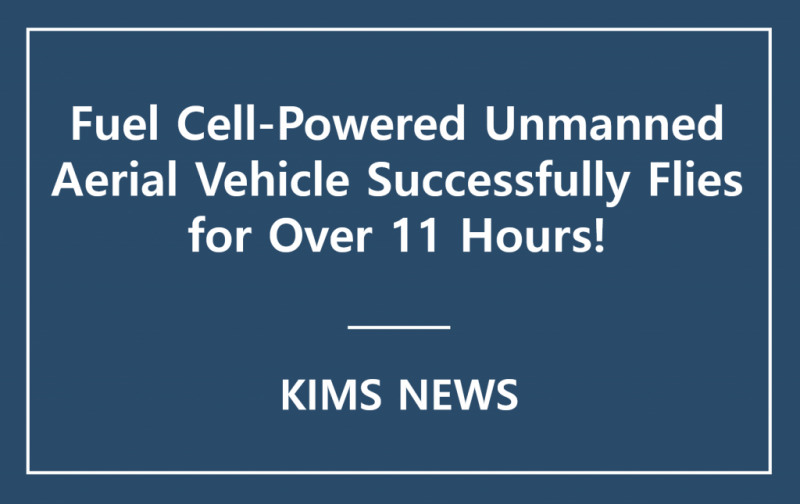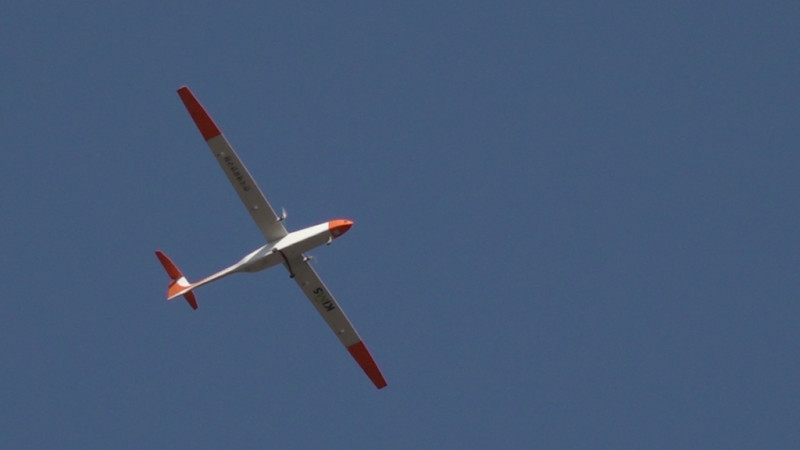R&D | Aerial Demonstration of a Self-Developed Fuel Cell Power Source for Unmanned Aerial Vehicles
Page info
Date23-11-15 00:00 Hit126Link
Contents
|
A research team led by Dr. Cheol-nam Yang from the Aerospace Materials Center of the Materials Digital Platform Division at the Korea Institute of Materials Science(KIMS) designed and manufactured a 1kW polymer electrolyte fuel cell. They applied this fuel cell to an unmanned aerial vehicle with a wingspan of 7.2 m and successfully conducted an aerial demonstration, achieving a flight distance of 770 km over 11 hours. KIMS is a government-funded research institute under the Ministry of Science and ICT.
The application of internal combustion engines to existing unmanned aerial vehicles offers advantages for prolonged flight but poses various challenges, including issues related to noise, and vibration, heat detection, air pollution through exhaust gases, and low energy efficiency. In recent times, electric propulsion methods have gained popularity with lithium batteries serving as secondary batteries, emerging as a primary energy source for the electric motors of unmanned aerial vehicles. However, due to the low energy density in the battery, hurdles arise that complicate efforts to extend the relatively brief flight times.
To overcome the limitations of traditional engines and lithium batteries, the research team has devised a novel power unit. This groundbreaking innovation has been implemented in an unmanned aerial vehicle through the construction of a battery and hybrid power system. Consequently, the team has successfully pioneered a fuel cell power source for unmanned aerial vehicles, enabling for extended flight durations and mission performance surpassing 12 hours. Furthermore, the team has successfully conducted an aerial demonstration.
The fuel cell and battery hybrid technology used in this application consist of a combination of a 1 kW fuel cell for electrical output and a lithium polymer secondary battery. To meet the rapid electrical output demands during takeoff and mid-air operations of the unmanned aerial vehicle, it was designed to achieve a maximum output of more than 4,200W. This technology can overcome the low energy density of secondary batteries currently employed in unmanned aerial vehicles, making it well-suited for electric propulsion unmanned aerial vehicles that require long-term endurance. It is anticipated to be employed in applications such as coastlines, inland waters, environmental monitoring, and industrial infrastructure surveillance.
Currently, Canada's BPS company and FLY H2 Aerospace are collaboratively developing fuel cell-powered unmanned aerial vehicle technology. With the support of African governments, the project aims to achieve a flight duration of 9 hours and a range of 600 km. The recent accomplishment has surpassed the initial goal, reaching an advanced level of development.
The domestic market size for fuel cell-powered unmanned aerial vehicle technology is still in its early stages, with schools and venture companies utilizing foreign fuel cells and incorporating them into unmanned aerial vehicles. Most of these vehicles are developed with the involvement of foreign fuel cell system companies, resulting in a limited degree of freedom in the development process. However, the development of this technology is anticipated to contribute to technological independence, fostering a reduction in import dependency through collaborative efforts and joint development with domestic fuel cell-powered unmanned aerial vehicle developers.
Dr. Cheol-nam Yang who is responsible for developing this technology stated,“By applying the developed fuel cell power source and achieving a flight duration of more than 11 hours, I believe we have reached a world-class level for civilian use,”and He added,“Now, we will continue to develop fuel cells capable of sustaining continuous flight for 24 hours and conduct empirical research on the application of unmanned aerial vehicles, with the goal of achieving a level suitable for both civil and military purposes.”
This research achievement was carried out through ‘the Development of fuel cell power source for aircraft and development of verification technology’project, a fundamental project of KIMS, funded by the Ministry of Science and ICT.


